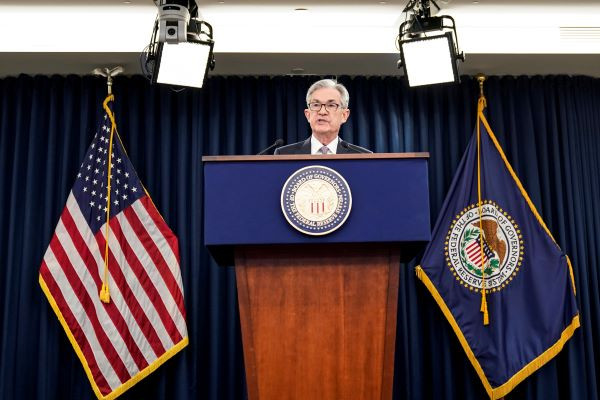President Donald Trump is widely expected to launch blistering Twitter attacks against the U.S. Federal Reserve after its decision Wednesday to keep interest rates unchanged for all of 2020 in light of persistently low inflation. The decision to keep rates unchanged was unanimous.
The inflation rate remained below 2% for most of the year before rising to 2.1% in November. The inflation rate stood at 1.8% in October. The rise in November was the highest since November 2018. The Fed considers 2% inflation healthy.
The decision by the Fed's Federal Open Market Committee (FOMC), which manages the United States' money supply, was widely expected. At the end of its two-day meeting this week, the FOMC kept the federal funds rate in a target range of 1.5% to 1.75%. FOMC also plans to raise rates to 1.9% in 2021 and to 2.1% in 2022.
The new target rate affects interest charges on a broad range of commercial loans and government bonds.
"Job gains have been solid, on average, in recent months, and the unemployment rate has remained low. Although household spending has been rising at a strong pace, business fixed investment and exports remain weak," said the Fed in a statement.
The higher rates starting 2021 should be welcome news for banks and other financial institutions that have been the hardest hit by the prevailing low rate regime. U.S. investment bank and financial services firm Morgan Stanley on Tuesday announced the firing of 1,500 more employees despite boasting in October its third-quarter revenue was its best in a decade.
In July, Deutsche Bank revealed a painful restructuring that will see 18,000 employees lose their jobs over the next few years. Analysts contend banks and other financial institutions are facing increasing pressure to control expenses and restrain spending due to the prevailing low-interest rate regime.
They point out a number of other European banks have also fired people in a bid to control costs. The low rates are also hurting individual Americans with bank accounts.
In explaining the decision to leave rates unchanged, FOMC indicated the monetary policy is likely to stay where it is for an unspecified time. It said it will continue to monitor conditions as they develop.
"The Committee judges that the current stance of monetary policy is appropriate to support the sustained expansion of economic activity, strong labor market conditions, and inflation near the Committee's symmetric 2 percent objective," the statement said.
"The Committee will continue to monitor the implications of incoming information for the economic outlook, including global developments and muted inflation pressures, as it assesses the appropriate path of the the target range for the federal funds rate" said FOMC in its statement.
The language is consistent with recent statements from Fed Chairman Jerome Powell and his colleagues. Powell recently said Fed policy is in "a good place" and will likely remain unchanged as long as current conditions persist.
FOMC again projected the U.S. gross domestic product (GDP) to grow 2.2% in 2019. It estimates a growth of 2% in 2020, 1.9% in 2021 and 1.8% in 2022.
Powell said he'd focus on boosting inflation, which has mostly remained below the 2% target set by the Fed.
"I think we've learned that unemployment can remain at very low levels for extended periods of time without upward pressure on prices," noted Powell. "In fact, we need some upward pressure on inflation."






